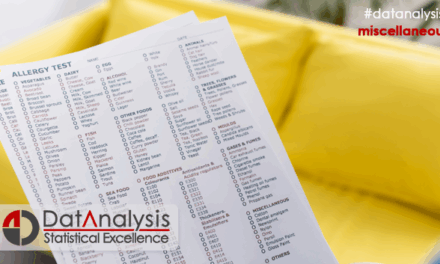Description of the Questionnaire
This questionnaire is designed based on the 4MAT model by Bernice McCarthy, which integrates learning theory and brain-based preferences to understand different ways individuals learn. The model identifies four main learner types, each of whom approaches learning differently: Type 1 focuses on emotional experience, Type 2 on analytical thinking, Type 3 on action and application, and Type 4 on innovation and experimentation. The questionnaire includes statements that help identify how each person learns most effectively.
Analysis and Use of Data
Participants are asked to evaluate a series of statements related to different learning approaches. Evaluation is done using a five-point scale, where 1 means “not at all” and 5 means “completely.” Each statement is designed to correspond to one of the four learning types in the 4MAT model. Upon collecting the responses, the scores are grouped by learning type, allowing the dominant learning preference of each participant to be identified.
Use of Data
The data derived from the questionnaire are used to determine each individual’s learning style and enhance self-awareness regarding how they best learn. Recognizing one’s learning style can help in designing personalized instructional approaches, enriching the learning experience, and allowing educators to adjust their teaching practices to meet the needs of all types of learners.
Objective
The objective of this questionnaire is to help individuals recognize their dominant learning type, understand how they perceive, process, and apply knowledge, and gain a tool for personal development. At the same time, educators can use the results to create learning environments that accommodate diverse learner profiles and support differentiated instruction.
Scoring
Scoring is based on the total points a participant assigns to each group of statements, with each group representing one of the four learning types. For example, statements such as “I enjoy learning through personal experiences and emotions” correspond to Type 1, while statements like “I prefer to understand an idea in depth before applying it” relate to Type 2. Statements such as “I learn best when I can apply something in practice” are linked to Type 3, and “I enjoy experimenting with new methods or ideas” corresponds to Type 4. The highest cumulative score indicates the participant’s dominant learning type, although strong secondary types may also be present.
Bibliography
McCarthy, B. (1987). The 4MAT System: Teaching to Learning Styles with Right/Left Mode Techniques. Excel, Inc.
McCarthy, B., & McCarthy, D. (2006). Teaching Around the 4MAT Cycle: Designing Instruction for Diverse Learners with Diverse Learning Styles. Corwin Press.
Kolb, D. A. (1984). Experiential Learning: Experience as the Source of Learning and Development. Prentice Hall.

![The 4MAT System [T4MATS-16]](https://statistics.datanalysis.net/wp-content/uploads/2025/05/miscellaneous6-EN-650x400-250503.png)
![The Wonderful Weather [HWW-10]](https://statistics.datanalysis.net/wp-content/uploads/2025/05/miscellaneous1-EN-650x400-250503-440x264.png)

![Observing Patient Involvement in Decision Making [OPIDM-12]](https://statistics.datanalysis.net/wp-content/uploads/2025/05/miscellaneous4-EN-650x400-250503-440x264.png)
![US Determinants of Exercise in Women Phone Survey [USDEWPS-6]](https://statistics.datanalysis.net/wp-content/uploads/2025/05/miscellaneous2-EN-650x400-250503-440x264.png)
![Athletic Injury Questionnaire [AIQ-11]](https://statistics.datanalysis.net/wp-content/uploads/2025/05/health2-EN-650x400-250503-150x150.png)